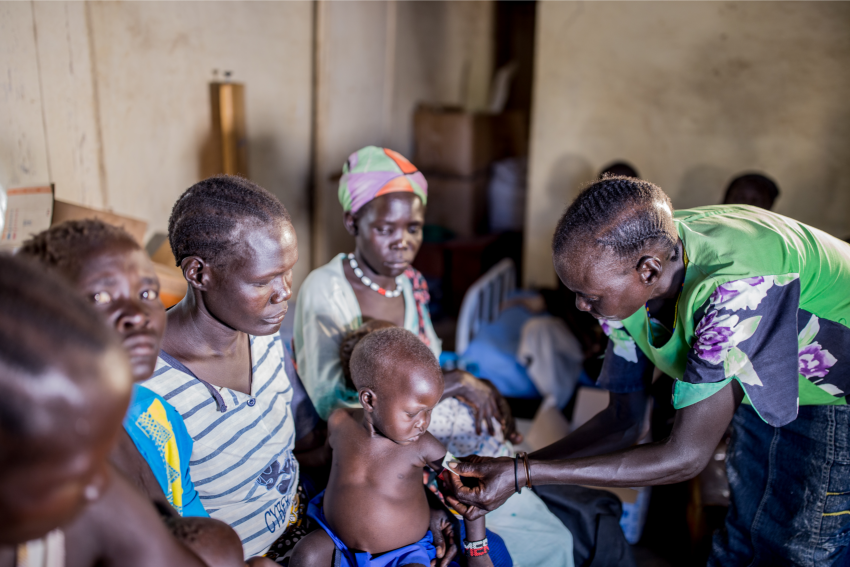
By Lynette Kamau, Policy and Communications Officer, APHRC
At about 8.30 am on December 5, 2017, we arrived in Torit town, Imotong State in South Sudan. It was my maiden trip to South Sudan.
We made our way to Nyong health facility which was recently renovated so as to provide antenatal, delivery and nutrition services to the women and children in the area.
As we drove to the health facility, the radio presenter blurted out to everyone’s amusement: “It is air-conditioned weather today in Torit.” I imagine we were all silently hoping for cool temperatures. This was the confirmation we needed. The temperatures in South Sudan can rise to 40 degrees Celsius.
At the Nyong health facility, we met 28-year-old Sabina Napisho cradling her two-week-old baby at the nutrition clinic. I engaged her in a conversation. Napisho informed me she had been coming to the clinic for about nine months.
Early last year, Napisho suspected she was pregnant. In April 2017, she confided in a friend who advised her to visit Nyong health facility which is nearest to her home to get a proper diagnosis. She soon found out that the nearest health facility was a grueling five-kilometer trek. On her first visit to the health facility, her pregnancy was confirmed. Napisho was also found to be underweight and referred to the nutrition clinic.
“During the pregnancy, the walk to Nyong health facility was very difficult for me. I would get tired very fast and sometimes even feel dizzy especially on the hot days,” Napisho explained.
Despite the distance, Napisho was able to attend four antenatal visits as recommended by the World Health Organization (WHO). In South Sudan, only 17% of women make the four visits according to data from Primary Health Care Performance Initiative. Access to antenatal and nutrition services is a challenge for many pregnant women in the country. This is mainly due to the distance between the homesteads and health facilities.
The nutrition clinic in Nyong health facility is a lifesaving measure for Napisho and her two-week-old boy. “I do not have enough milk to feed my baby whom I am exclusively breastfeeding,” said Napisho.
Napisho dutifully attends the nutrition clinic every week where she receives food supplements. The supplements are necessary for generating breast milk. She hopes that she will soon gain weight and have enough milk to exclusively breastfeed her baby.
“The journey to the health facility is difficult. Sometimes it is too hot to even walk. The rainy season is also bad because I have to cross flooded rivers,” described Napisho.
The thought of Napisho carrying her two-week-old baby while crossing a flooded river is still etched in my mind.
Napisho’s story highlights the challenges women in South Sudan continue to face so as to access lifesaving health services. They have to brave long trekking distances, lack of transport and harsh weather conditions. These barriers are further complicated by sporadic situations of violence in South Sudan. When there is violence, women are afraid to go to hospital due to insecurity. It is no wonder that only 13% of women in South Sudan deliver in health facilities.
Access to health services is key in saving the lives of women and children who are dying from preventable pregnancy and delivery complications. In South Sudan, this is one of the factors contributing to the death of 789 women in every 100,000 according to 2015 WHO estimates. This is one of the highest maternal deaths in sub-Saharan Africa.
As we commemorate the International Women’s day, whose theme is Press for Progress, we need to reflect on how we can press to ensure that women like Napisho have access to quality maternal health services. The Innovating for Maternal and Child Health in Africa program is supporting researchers in South Sudan to assess and advice on innovative approaches to link communities to health facilities. Barriers to women’s access to these lifesaving services can only be addressed globally, through evidence-informed interventions and adequate health funding. This will progress to a future where no woman or child is dying from preventable pregnancy and delivery complications.
000


